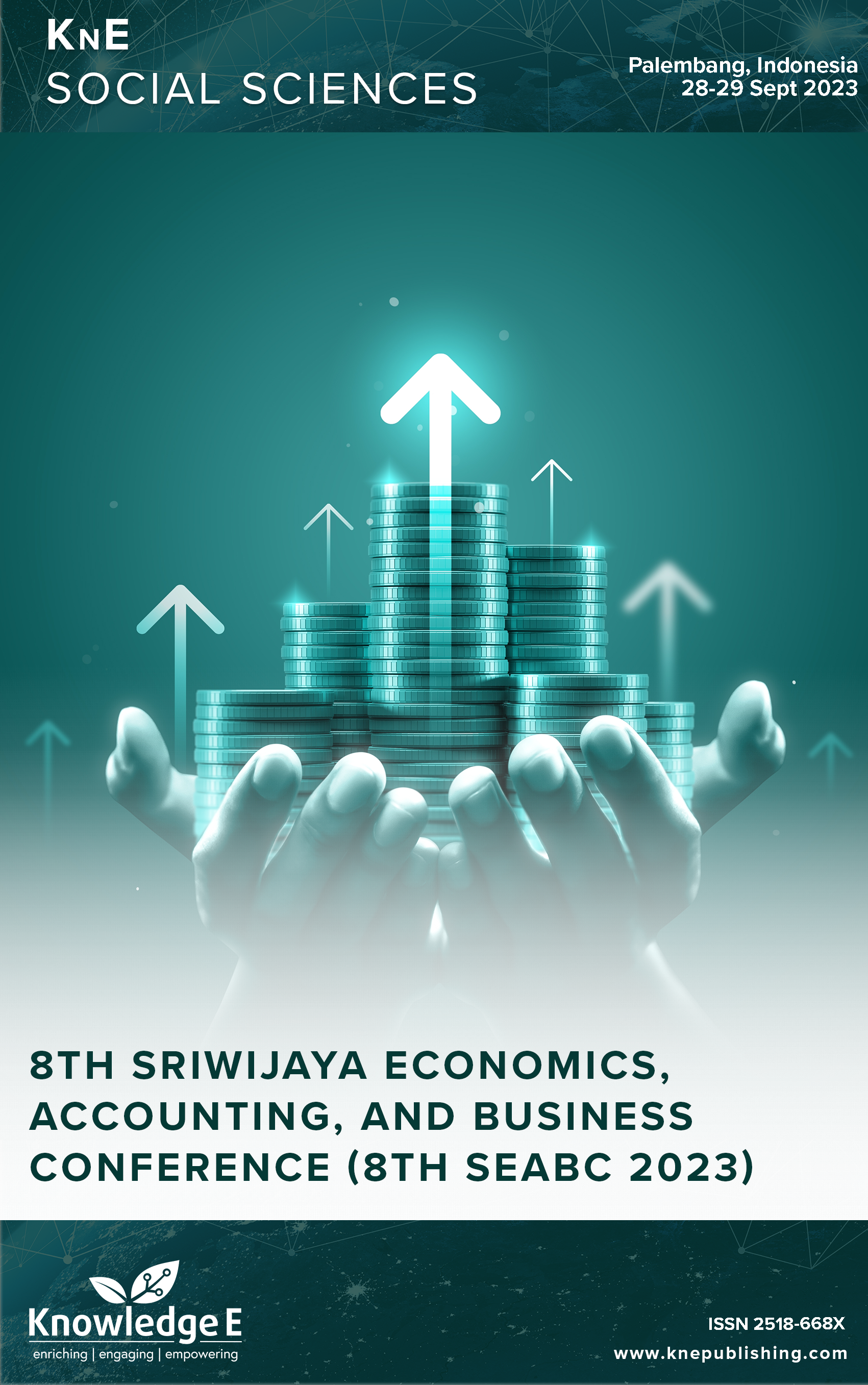The Impact of Trade Openness, Tariff, and Globalization on Food Security in the ASEAN Region
DOI:
https://doi.org/10.18502/kss.v9i14.16107Abstract
In 2023, many crises hit the world due to heated geopolitical conditions resulting from the war in Russia and Ukraine; the world situation was fragmented because of competition between the USA and PRC blocs, economic recovery due to COVID-19 was shaken again, and food inflation was soaring high. The leading cause of food insecurity in ASEAN, which consists of most developing countries, is the lack of distribution access due to the affordability of logistics and food supplies. Most investors shift their investment preferences from the primary sector to manufacturing due to the volatility and high risk of assets. In 2020, in Asia, there were 78.7 million toddlers who were stunted, with the second majority in Southeast Asia (27.40%). Although most of the ASEAN member countries are connected geographically, the market share of ASEAN member countries in world trade is only 8.8%, so intra-trade relations are considered not optimal enough. This study aims to analyze the effect of three different trade openness indicators (trade openness, tariffs, and globalization) on the food security of Southeast Asian people in 2000–2021. The method used in this research is panel data, which combines pool least squares (PLS) and fixed effect models (FEM) by developing Beck and Katz’s two panels corrected standard errors (PCSE): cross-section weights and SUR. Trade openness significantly affects the two pillars of food security: stability and utilization, with U-shaped results. Ad-valorem tariffs are significant and positive for the two pillars of food security: availability and utilization. Increasing taxes in Southeast Asia can improve the average dietary energy supply’s adequacy; however, this can also increase the prevalence of stunting in children under five. It happens because the availability of abundant food in terms of quantity differs from the quality and safety of its consumption. The increase in globalization from an economic, political, and social perspective in Southeast Asia is significant for the four pillars of food security; if globalization is increased, then this can positively impact reducing cases of stunting and malnutrition; on the other hand, increasing globalization has harmed food availability and stability. Increasing one policy has a different impact. In the first stage, policy improvements can positively impact a pillar of food security. However, after reaching a turning point, there is a possibility that the increased policy will harm the other pillars. Therefore, it is necessary to choose an integrative policy trade-off and be able to solve problems better. This study suggests several main policy implications, namely building a more assertive trade policy based on the WTO and food safety technical rules that comply with WHO rules, increasing intra-trade within the ASEAN group, maintaining food price stability, encouraging investment in agriculture, promoting governance reforms, and strengthening the regional food security system in terms of production, consumption, and distribution. Support policies are also needed regarding solid prevention efforts against stunting and malnutrition and digitalization (Agritech 4.0), which supports food availability. In addition, this research also suggests that ASEAN can continue to increase domestic food production for resilience to the global crisis.
Keywords: trade openness, tariff, globalization, food security, ASEAN, dynamic panel
References
Herath LC, Yongbing C. Impacts of Regional Trade Agreements (RTAS) on food security: A case of ASEAN free trade agreement. International Journal of Social Science & Interdisciplinary Research. 2014:147–157. DOI: https://doi.org/10.2139/ssrn.2463578
Mamonto MA. Conformity of capital provisions for foreign investors in the regulations of the investment coordinating board of the Republic of Indonesia. Journal of Humanities and Social Sciences Innovation. 2023;3(2). DOI: https://doi.org/10.35877/454RI.daengku1434
World Bank. World Development Report 2022: Rethinking food security in a changing world. Washington DC; 2021.
Fathelrahman E, Davies S, Muhammad S. Food trade openness and enhancement of food security-partial equilibrium model simulations for selected countries. Sustainability MDPI. 2021:1–20. DOI: https://doi.org/10.3390/su13084107
Fusco G, Coluccia B, De Leo F. Effect of trade openness on food security in the EU: A dynamic panel analysis. Int J Environ Res Public Health. 2020;17(12):1–13. DOI: https://doi.org/10.3390/ijerph17124311
Sun Z, Zhang D. Impact of trade openness on food security: Evidence from panel data for central Asian countries. Foods MDPI. 2021:1–20. DOI: https://doi.org/10.3390/foods10123012
Dithmer J, Abdulai A. Does trade openness contribute to food security? A dynamic panel analysis. Food Policy. 2017;218–230. DOI: https://doi.org/10.1016/j.foodpol.2017.04.008
Zolin MB, Cavapozzi D, Mazzarolo M. Food security and trade policies: Evidence from the milk sector case study. Food Security Trade Policies Emerald. 2021:60–72. DOI: https://doi.org/10.1108/BFJ-07-2020-0577
Food and Agriculture Organization of United Nations. The state of food security and nutrition in the world 2023. Rome; 2023.
Wooldridge JM. Econometric analysis of cross section and panel data. 2nd ed. London: The MIT Press; 2010.
Bello AL. Ensuring food security-A case for ASEAN integration. Asian J Agric Dev. 2005;2(1–2):87–108. DOI: https://doi.org/10.37801/ajad2005.2.1-2.8
Bogoviz AV. He Problem of provision of food security through management of the AIC: Transnationalization vs import substitution. Impact Inf Mod Humans Cham Springer Int Publ. 2018:83–88. DOI: https://doi.org/10.1007/978-3-319-75383-6_11
Matthews A. Economic partnership agreements and food security. Assess Prospect Trade Policy Routledge; 2010. pp. 219–238.
Wooldridge JM. Control function methods in applied econometrics. J Hum Resour. 2015;50(2):420–445. DOI: https://doi.org/10.3368/jhr.50.2.420
Wooldridge JM. Introductory econometrics: A modern approach. 6th ed. Boston: Cengage Learning; 2016.
Erokhin V. Establishing food security and alternatives to international trade. Emerging Economies. Igi Global; 2017. DOI: https://doi.org/10.4018/978-1-5225-2733-6
Koirala KM. Trade openness and food security in ASEAN countries: Evidence from panel data analysis. Journal of Economic Cooperation and Development. 2020;41(2):119–136.
Ing LY. Ad valorem equivalents of non-tariff measures in ASEAN. 2017.
Hermawan I. Measuring ASEAN Rice Non-Tariff Measures (NTMs) and its impact on Indonesian food (rice) security. 3rd Int Conf Accounting, Manag Econ 2018 (ICAME 2018). Atl Press; 2019. pp. 334–343. DOI: https://doi.org/10.2991/icame-18.2019.37
Asian Development Bank. Asian development outlook 2021 update transforming agriculture. 2021.
Agarwal B. Gender equality, food security and the sustainable development goals. Curr Opin Environ Sustain. 2018;34:26–31. DOI: https://doi.org/10.1016/j.cosust.2018.07.002
Yudhatama PN, Nurjanah F, Diaraningtyas C, Revindo MD. Food security, agricultural sector resilience, and economic integration: Case study of ASEAN+ 3. J Ekon Stud Pembang. 2021;22(1):89–109. DOI: https://doi.org/10.18196/jesp.v22i1.9605

